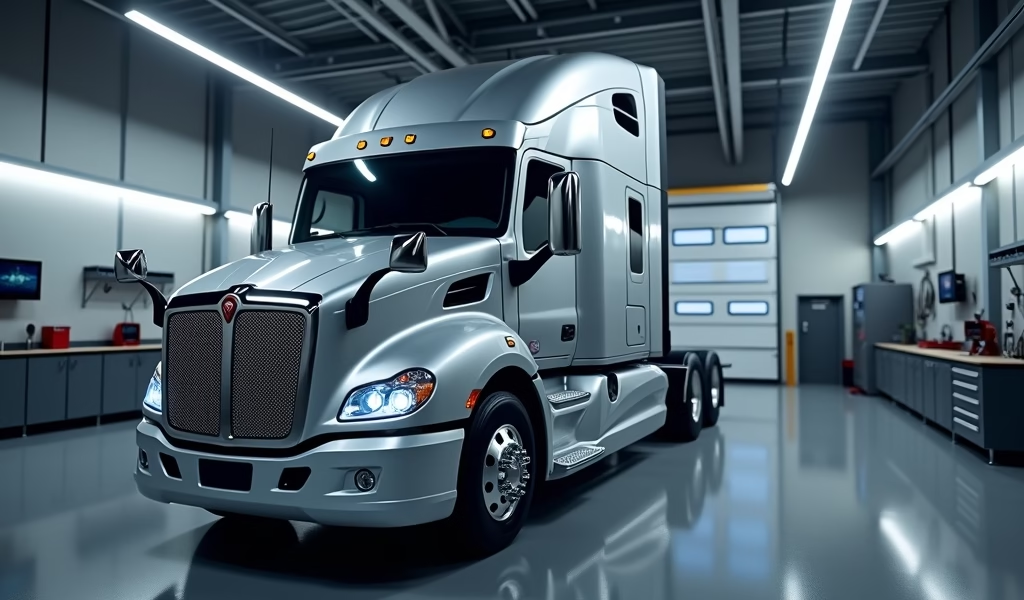Overview
This article provides an in-depth guide to radar detectors for truck drivers, covering legal considerations, key features to look for, top 5 recommended models for 2023, installation tips, and maintenance advice. It emphasizes that while radar detectors can provide valuable alerts for professional drivers, they’re illegal in commercial vehicles over 10,000 pounds under federal regulations, and should be used as safety tools rather than encouragements to speed.
Table of Contents
- Understanding Radar Detectors for Trucks
- Legal Considerations for Commercial Drivers
- Key Features to Look for in Truck Radar Detectors
- Top 5 Radar Detectors for Trucks in 2023
- Installation Tips for Optimal Performance
- Maintaining Your Radar Detector
- Conclusion
- Frequently Asked Questions
Understanding Radar Detectors for Trucks
If you’ve ever felt that surge of adrenaline when spotting a patrol car while hauling a heavy load, you know exactly why radar detectors have become essential equipment for many truck drivers. As someone who’s spent decades under the hood and behind the wheel, I can tell you that these devices aren’t just about avoiding tickets—they’re about peace of mind on those long hauls.
Radar detectors for trucks are specialized receivers designed to alert drivers to police radar signals. Unlike standard car units, these detectors are engineered specifically for the unique environment of a truck cab, with considerations for mounting height, cabin size, and the electrical systems typical in commercial vehicles.
The basic principle is straightforward: when law enforcement uses radar to measure vehicle speed, these devices emit microwave signals. Your detector picks up these signals and warns you with enough time to check your speedometer and adjust if needed. It’s like having an extra set of eyes watching the road ahead.
But here’s what most folks don’t realize—truck cabs present unique challenges for radar detection. The elevated position of your windshield changes how signals reach your detector. Those big rigs also generate more electrical interference than passenger vehicles, which can trigger false alerts on lesser detectors. That’s why investing in a truck-specific model makes all the difference.
Legal Considerations for Commercial Drivers
Before we dive into the best detectors on the market, let’s clear up something important: the legality of using these devices varies significantly depending on where you’re driving and what you’re driving.
For commercial vehicles operating interstate, federal regulations under the Department of Transportation prohibit the use of radar detectors in vehicles exceeding 10,000 pounds. That’s a hard rule that applies across all states. Violations can result in hefty fines and potential CSA score impacts—something no professional driver wants on their record.
For non-commercial drivers or those in lighter commercial vehicles, most states allow radar detectors, with notable exceptions being Virginia and Washington D.C., where they’re prohibited for all vehicles. Military installations and federal lands often have their own restrictions as well.
Up north in Canada, our neighbors have even stricter rules, with radar detectors being illegal in most provinces regardless of vehicle type. If you’re hauling cross-border, you’ll need to be particularly careful.
The landscape gets even more complex when we consider radar jammers—devices that actually interfere with police equipment rather than just detecting it. These are illegal everywhere in the US and can lead to serious legal consequences. I always tell drivers: detection is one thing, jamming is another entirely.

Key Features to Look for in Truck Radar Detectors
When shopping for a radar detector that’ll serve you well in your rig, there are several key features that separate the good from the great. After years of testing these devices in every condition imaginable, I’ve narrowed down what really matters:
Detection Range
For trucks, this is non-negotiable. You’re hauling more weight than passenger vehicles, which means you need more time to slow down safely. A long-range radar detector gives you precious extra seconds to react, especially on highways where speed traps can appear around any bend.
False Alert Filtering
Modern vehicles are packed with radar-based systems—adaptive cruise control, blind-spot monitoring, and automatic door openers all use similar technology to police radar. A good truck detector needs sophisticated filtering to distinguish between these harmless signals and actual threats.
Look for detectors with:
- GPS lockouts that remember and ignore recurring false alerts
- Band segmentation that focuses only on frequencies used by law enforcement
- Auto-learning technology that improves filtering over time
Durability and Design
Life on the road is rough, and your equipment needs to handle it. The constant vibration in a truck cab can destroy lesser electronics, so look for solid construction with quality components. Mounting options matter too—trucks have different windshield angles and dashboard configurations than cars, so versatile mounting systems are a plus.
User Interface
When you’re managing an 80,000-pound vehicle, you need information you can process at a glance. The best detectors offer:
- Clear visual indicators with directional arrows showing where threats are coming from
- Distinct audio alerts that can be heard over engine noise
- Customizable alert settings to match your driving style
Connectivity
Modern detectors can connect to smartphones via Bluetooth or Wi-Fi, offering additional features like community alert sharing (where other drivers can mark patrol locations) and automatic database updates for known speed traps and camera locations. These connected features can be game-changers for regular routes.
Top 5 Radar Detectors for Trucks in 2023
After extensive testing and consulting with professional drivers, here are my top picks for truck-friendly radar detectors this year:
1. Escort Max 360c MKII
If I could only recommend one detector for serious truck drivers, this would be it. The Escort Max 360c MKII represents the pinnacle of detection technology with dual antennas providing true 360-degree coverage. What makes it perfect for truckers is its Wi-Fi connectivity for automatic updates and its exceptional filtering system that virtually eliminates false alerts.
The arrows showing threat direction are invaluable when you’re trying to spot patrol cars while managing a large vehicle. Yes, it’s pricey ($649-$699), but for drivers who make their living on the road, it’s worth every penny. The AutoLearn feature remembers and automatically mutes recurring false alerts after just a few passes—perfect for regular routes.
2. Uniden R8
The R8 is Uniden’s flagship model, and it delivers exceptional performance at a slightly more affordable price point ($599). What impresses me most is its raw detection power—this thing can pick up radar from distances that seem almost impossible. The filtering isn’t quite as refined as the Escort, but for rural highway driving where false alerts are less common, it’s hard to beat.
The large, color display is easy to read even in bright sunlight, and the built-in GPS allows for manual marking of false alert locations. For truckers who value early warning above all else, this is your detector.
3. Valentine One Gen2
The Valentine One has been a favorite among serious drivers for decades, and the Gen2 model continues that legacy with significant improvements. What makes it stand out is its surgical precision in detecting and categorizing threats. While other detectors might give you a general warning, the Valentine tells you exactly what you’re dealing with.
It’s particularly good at picking up instant-on radar, which many other detectors miss until it’s too late. The Valentine community is also incredibly dedicated, with drivers sharing detailed information about detection patterns and locations. Priced around $499, it’s a professional-grade tool for those who appreciate technical excellence.
4. Radenso Pro M
If your routes take you through suburban areas where false alerts run rampant, the Radenso Pro M ($449) might be your best bet. What it lacks in brand recognition, it makes up for with possibly the best filtering system in the business. It’s also one of the quietest detectors I’ve tested, with GPS lockouts that actually work consistently.
The smaller form factor makes it easier to place discreetly in a truck cab, and the simple interface means less distraction while driving. For local and regional drivers dealing with complex radar environments, this is a hidden gem worth considering.
5. Cobra DualPro 360
For drivers looking for solid performance without breaking the bank, the Cobra DualPro 360 ($399) offers impressive value. It provides front and rear detection with directional indicators at a price point well below the premium options. While it doesn’t match the raw performance of the top-tier detectors, it offers something they don’t: integration with the largest driver community alert network through the iRadar app.
This community feature can be invaluable, especially on unfamiliar routes where local knowledge makes all the difference. For newer drivers or those on a budget, this offers the best balance of performance and price in a truck-friendly package.

Installation Tips for Optimal Performance
Even the best radar detector won’t perform well if it’s poorly installed. Here’s how to get the most out of your investment with proper radar detector installation:
Mounting Location
In trucks, height matters more than you might think. The ideal position is centered high on your windshield, with a clear view of the road ahead. Avoid placing it behind windshield wipers, tinting strips, or any metallic film that can block signals.
Many professional drivers prefer using a suction cup mount for flexibility, but for a cleaner look, consider a BlendMount that attaches to your rearview mirror mount. Whatever method you choose, ensure the detector is level with the road for optimal reception.
Power Considerations
Most detectors come with a power cord that plugs into your 12V socket, but in trucks, this can sometimes lead to electrical noise issues. If you experience random false alerts, consider these alternatives:
- Direct hardwiring with a power kit that connects to your fuse box
- High-quality power cords with built-in noise filters
- For the technically inclined, adding a separate ground wire to eliminate electrical interference
Avoiding Interference
Modern trucks are packed with systems that can trigger false alerts. To minimize these:
- Keep your detector at least 6 inches away from GPS units
- Position it away from CB radios and dispatch systems
- Be mindful of your truck’s own radar-based safety systems, which might trigger alerts until your detector learns to ignore them
Remember that proper installation isn’t just about performance—it’s about safety too. Position your detector where you can see and hear alerts without taking your eyes off the road for too long. A quick glance should be all you need to process the information.
Maintaining Your Radar Detector
Like any precision instrument, your radar detector needs regular maintenance to stay in top form. Here’s my simple maintenance routine that keeps these devices performing their best year after year:
Regular Cleaning
Truck environments are notoriously dusty, and that buildup can affect performance. Once a month, wipe down the exterior with a slightly damp microfiber cloth, paying special attention to the sensor areas (usually in the front and rear). Avoid harsh chemicals or alcohol-based cleaners, which can damage the plastic housing or display.
Don’t forget to clean the windshield area where the detector mounts. A clean mounting surface ensures proper adhesion and helps prevent those heart-stopping moments when your detector suddenly falls during a drive.
Software Updates
Modern detectors receive regular firmware updates that improve performance and add new features. For Wi-Fi enabled units like the Escort Max 360c, these happen automatically when in range of a known network. For other models, check the manufacturer’s website quarterly for available updates.
These updates often include:
- Enhanced filtering algorithms for fewer false alerts
- New speed camera and red light camera locations
- Improved detection of the latest radar and laser technologies
Performance Testing
Every six months, do a simple performance check. Find a straight road with minimal traffic and test your detector against a known radar source (many police departments have fixed speed signs that use actual radar). Note how far away you receive the first alert—if this distance has decreased significantly since purchase, it might be time for service or replacement.
Pay attention to false alert patterns too. If you’re suddenly getting more false alerts than usual, it could indicate a problem with the unit or simply that you need to update your GPS lockouts for new sources of interference.
Conclusion
Choosing the right radar detector for your truck isn’t just about avoiding tickets—it’s about adding a layer of awareness that helps you drive more safely and confidently. The best detector for your needs will depend on your typical routes, budget, and personal preferences, but any of the five models we’ve covered will serve you well on the road.
Remember that even the best radar detector is only as good as the driver using it. These devices are tools to complement safe driving habits, not replacements for them. Use the advance warning to check your speed and surroundings, not as a license to push limits.
For commercial drivers operating under federal regulations, always be mindful of the legal restrictions that apply to your vehicle class. The consequences of violating these rules can far outweigh any perceived benefits.
With the right detector properly installed and maintained, you’ll have one less thing to worry about on those long hauls. That extra peace of mind lets you focus on what really matters—arriving safely at your destination with your cargo intact and your schedule on track.
Frequently Asked Questions
Are radar detectors legal in commercial trucks?
No, federal law prohibits radar detectors in commercial vehicles weighing over 10,000 pounds in the United States. They’re also illegal for all vehicles in Virginia and Washington D.C.
What’s the difference between a car detector and a truck detector?
Truck radar detectors are designed with stronger reception capabilities to account for higher mounting positions and larger cabins. They also typically have better filtering systems to handle the increased electrical interference found in commercial vehicles.
How often should I update my radar detector?
Check for updates at least quarterly, or set up automatic updates if your model supports it. Regular updates improve detection accuracy and false alert filtering.
Can police detect that I’m using a radar detector?
Yes, radar detector detectors (RDDs) can identify the local oscillator leakage from most radar detectors. However, newer “stealth” models minimize this leakage to reduce detectability.
What’s the difference between radar and laser detection?
Radar uses radio waves that spread out and can be detected from a distance. Laser (LIDAR) uses focused light beams that are more precise and harder to detect until they’re directly aimed at your vehicle.

